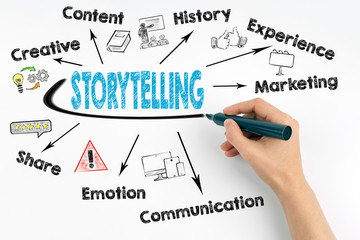“There’s always room for a story that can transport people to another place.” JK Rowling.

Storytelling is central to human existence, and common to every culture. We use stories to not only make sense of the world, but to also explain the world to others. Storytelling is the best tool we can use to communicate our ideas. JK Rowling may have been referring to Harry Potter, but telling a story can be a good way to get your point across in interviews. In this blog we go over what type of story you should tell, the format you should tell it in, and give you a real-life example of story-telling in interviews.
Many job interviews start with ‘Tell me about yourself’, and this is your time to shine. A chronological list of your life achievements will not ‘wow’, so don’t waste this opportunity. Use this question to tell a brief but memorable story that will explain why YOU are right for the job. The interviewer wants to get a sense of who you are, what you want, and whether they can trust you.
How to prepare your story
It’s important to tell the story that makes you the preferred candidate. Choose a story that reflects the competencies (such as teamwork, responsibility or communication) listed in the job profile. Your answers should give employers an indication of how you have reacted and dealt with different situations.
Which stories should you have on hand?
- When you solved a problem
- When you overcame a challenge
- When you made a mistake
- When you worked as a leader
- When you worked with a team
- When you did something interesting
Try to tie your story back to the position you are interviewing for to show their value to the panel. The stories you tell should be from times that you are proud of. Most stories should be related to work, university or positions of responsibility.
The STAR (Situation, Task, Action, Result) technique for storytelling is a good way to remember the order in which to tell your story.* To make your story even better, add an Obstacle that has to be overcome.

Telling your story
Start with a brief sentence about who, where and when the story took place.
- SITUATION “During the holiday after my ‘A’ levels I was working on a hospital reception. It was busier than usual due to the heatwave of 2013.”
Every memorable story includes a goal (task), an obstacle that may prevent the goal from being achieved, a decision (action) that make the goal possible and a result that comes about because of that decision.
- TASK “My job was to direct patients to the correct waiting areas of the department. It was a simple process of following coloured dots on the floor until they reached the waiting area at the end of the dots.”
- OBSTACLE “People were not arriving in the correct waiting areas. I realised that although the system seemed simple, when patients arrived they weren’t reporting to reception. There were up to 100 people waiting at the main reception.”
- ACTION “I went round the reception area to find out what people were waiting for, then directed them accordingly. I fed back to my manager that the initial communication should be clearer on the process.”
- RESULT “People understood where they should be waiting. The wording of the initial appointment invitation was subsequently changed.”
- ENDING “Clear communication and customer service were important aspects of this role and I would like to use the skills I developed in the advertised position.”

Your stories should be fairly short, easy to follow and honed in on the important details of how it applies to the job. Make sure it ends on a strong note about your goals or what you hope to achieve in this new job.
Good luck with you stories, but do remember to steer clear of anything that may show you in a less favourable light and always tell the truth. If you are hired, any embellishments may come back to haunt you!
Sources: https://www.wired.com/2011/03/why-do-we-tell-stories/
Other Types of Interview
Further Reading
- Leaflet: Presenting your skills to employers: Be guided by the STARS *
- Leaflet: The Job Interview
- Article: The Value of Storytelling
